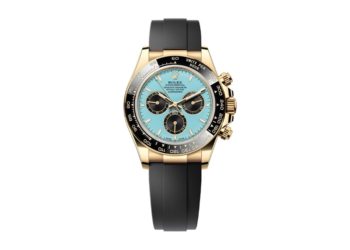A viral TikTok comparing a popular wedding dress silhouette to a once-beloved millennial wedding trend has sparked debate about style, cringe culture and timelessness.
“Don’t hate me, but the Basque waist of a wedding dress is the 2025 version of a Mason jar,” said creator Alexa Palermo in the video that kicked off the conversation. “I’m sorry.” Since her video was posted, it has received 1.6 million views. Palermo, 29, spoke to Newsweek about why she shared her hot take—and how the conversation online is slowly shifting her perspective.
Palermo said she was inspired to make the comparison while shopping for her own wedding dress.
“I am currently shopping for my own wedding dress and see how popular the dramatic Basque waists are,” she said. “Every shop I have been in has their own version. They are beautiful and so flattering but, given the cyclical nature of trends, I believe I would look back on the dress and not love it, especially with their popularity in everyday fashion as well.”
The Basque waist, a V-shaped bodice point that elongates the torso, is indeed having a moment. But Palermo’s comment—likening it to the now-“cringe” Mason jar, a wedding staple of the early 2010s—touched a nerve.
“I believe people didn’t like my comparison because they inherently view Mason jars at weddings as cringe,” Palermo said. “While I understand the sentiment, and won’t have Mason jars at my wedding, I believe that they fit the time they were utilized in and it made those people happy to have them at their wedding, which is amazing.”
She continued: “Ultimately, I think what can turn a popular trend cringe is the overuse of it.”
That sentiment didn’t sit well with everyone. In a passionate response that has also gone viral, one millennial bride—who is getting married in a Basque waist dress—offered a full-throated defense of the style and millennial taste more broadly.
“Gen Z’s fear of being associated with millennial culture needs to be studied,” she said. “I’m getting married in September in, you guessed it, a Basque waist wedding dress. Just like countless people did before me. In the ’90s, the ’80s, the ’60s. And then in the late 1800s, where it all began.”
The video closed with a declaration that many commenters embraced: “I may be cringe, but I am…free.”
They’re everywhere and we are going to look back and know the exact time frame!
Monet Brewerton-Palmer, founder of Vionnette Vintage Bridal in Atlanta, also weighed in on the discourse.
“I responded to the Basque waist controversy on Instagram by detailing the history of the Basque waist dating back to Mary, Queen of Scots,” she told Newsweek. “My perspective on ‘timelessness’ is that anything is ‘timeless’ if you expand your time range far enough. Timelessness is both impossible and inevitable—because fashion is cyclical. There are almost no fashion trends without some historical precedence, especially one as basic as a waistline style.”
She added: “Is it true that 2025 and 2026 brides are asking for Basque waists? Yes. Is it also true that brides in the 1990s, 1940s, and Victorian era were getting married in Basque waist dresses? Yes. There just aren’t that many waistline styles available to us.”
Even Palermo, whose comparison ignited the conversation, has shifted her thinking in light of the viral response. She said that the more people who wrote in her comments that nothing was actually “timeless,” the more she agreed.
“Wedding culture seems to chase this idea of timelessness, and while I think the intention there is amazing, it doesn’t always happen how we hope,” she said. “Ultimately, people should be choosing dresses and decor that make them happy now and not worry if it will be out of style when you look back in 30 years. If you are still looking at your wedding photos in 30 years, that means you are still in a happy marriage and to me, that’s all that matters.”
The post New Theory on Outdated Millennial Staple Goes Viral—but Not Everyone Agrees appeared first on Newsweek.




